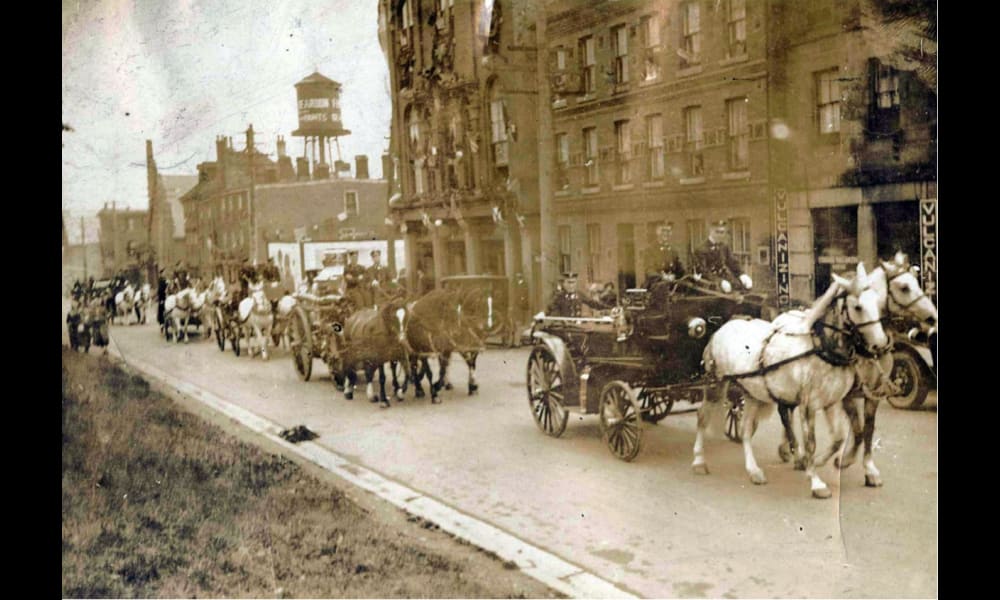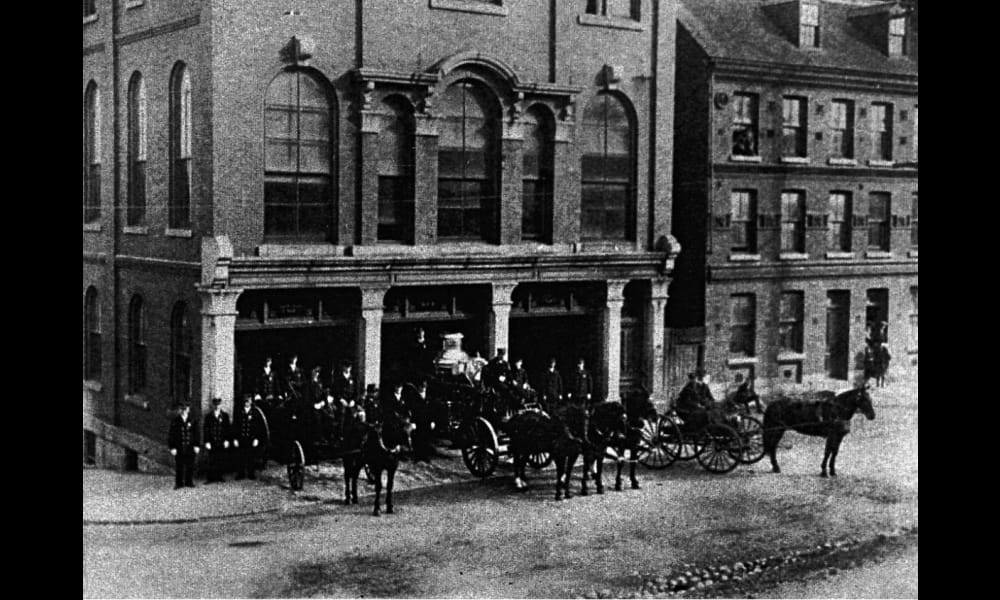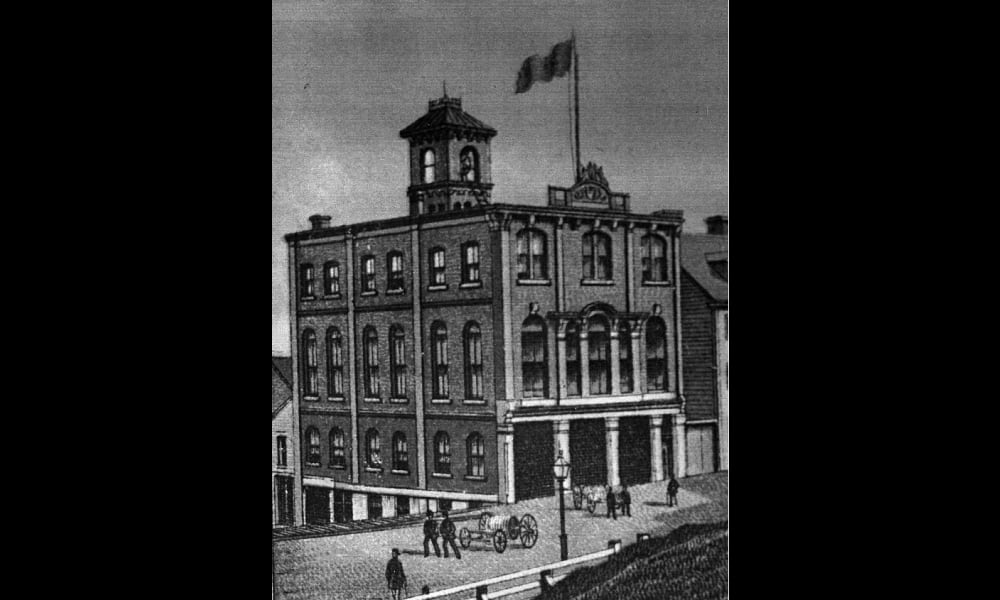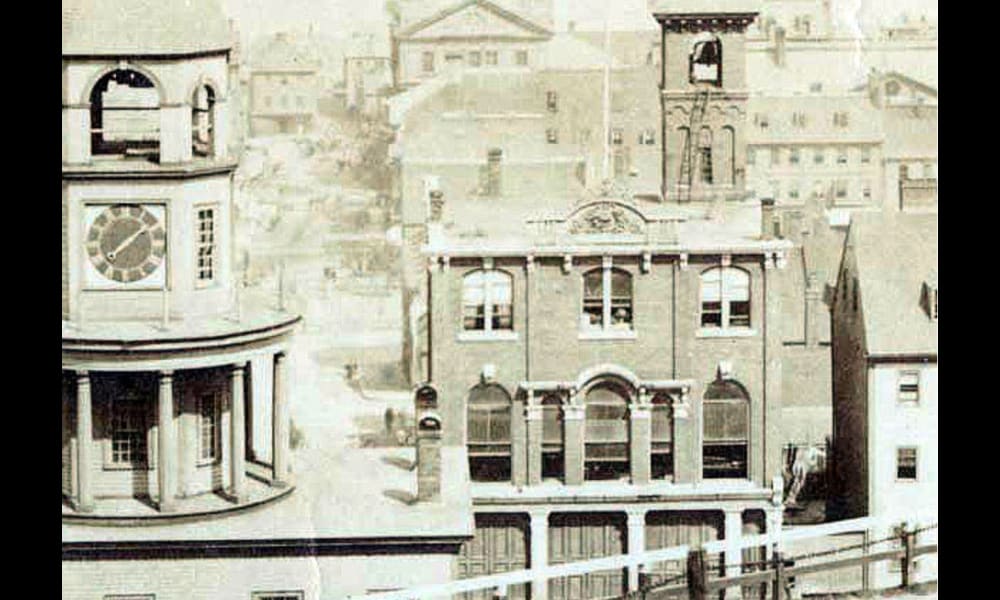The Brunswick Street Engine House, also referred to as the "Central" Engine House, was built between 1870 and 1871 on the corner of George and Barrack (Brunswick) Streets.
Background and Construction:
-
In April 1870, the City Property Committee recommended purchasing land at the corner of Barrack (Brunswick) and George Streets to build a principal engine house for the city. This building was intended to house the steam engine Victoria (which was temporarily at No. 6 Engine House), store essential firefighting materials, provide a meeting hall for firewards and fire companies, and include living quarters for a caretaker.
-
The estimated cost of the project was $6,500.
On April 18, 1870, the Legislature approved the city’s request to issue debentures for funding the construction.
The Brunswick Street Engine House was a major development in Halifax’s firefighting history, and its construction was closely monitored by the City Council and the City Property Committee. Below are key milestones related to its completion:
January 13, 1871 – City Council Inquiry on Construction Progress
City Council passed a motion requesting an update on the status of the new engine house’s construction. The motion read:
"Resolved that the Committee of City Property be requested to inform the Council at an early of day as possible the position of the contract for the construction of the new Engine House on Barracks Street (the old name for Brunswick Street) and as to the probability of the same being completed within the time limited for its construction."
The motion was passed, showing the city's urgency in ensuring the firehouse was completed on schedule.
November 3, 1871 – City Property Committee Report on Cost Overruns
As construction neared completion, the City Property Committee reported that the engine house at George and Barrack (Brunswick) Streets was almost finished and would soon be handed over to the city. However, financial issues had arisen:
-
The original amount borrowed for the project was insufficient.
-
$1,392.86 had already been overdrawn from the Treasury.
-
$1,664 was still owed to the contractor.
-
Additional costs were identified for:
-
Gas fittings and other necessary services: $1,000
-
Hose-drying apparatus and heating system: $1,100
-
Total additional funds needed: $5,156.86
-
To resolve the issue, the committee recommended that the city borrow the necessary funds from a local bank, to be repaid using funds borrowed under an Act of the Legislature.
November 17, 1871 – Final Funding Approval for Essential Equipment
City Council introduced and passed Resolution No. 2, instructing the City Property Committee to immediately acquire a hose-drying apparatus and heating system for the new engine house. The resolution stated:
"Resolved that the committee of City Property is instructed to provide without delay the necessary apparatus for hose drying and heating the new Engine House and that this Council will provide the means necessary to defray the expenses of the same in accordance with the resolution passed October 20th, 1871. The expenditure for this purpose not to exceed the sum of twelve hundred dollars."
This motion was moved by Alderman Duggan, seconded by another alderman (name unclear), and passed unanimously.
Summary of Brunswick Street Engine House Development
-
April 1870: City Council decided to build a new firehouse at George and Brunswick (Barrack) Streets.
-
January 13, 1871: Council requested an update on construction progress.
-
November 3, 1871: The building was nearly complete, but cost overruns of $5,156.86 required additional borrowing.
-
November 17, 1871: Council approved funds for hose drying and heating equipment (maximum of $1,200).
-
Late 1871: The engine house was officially completed and became Halifax's primary firefighting facility.
By November 3, 1871, construction was nearing completion, but costs had exceeded the borrowed amount. Additional funds were needed for gas fittings, a hose drying apparatus, and heating systems, bringing the total overrun to $5,156.86.
Key Features and Equipment:
-
By 1884, the Brunswick Street Engine House housed:
-
Steam fire engine "Victoria" № 1
-
Steamer hose carriage "Alert" № 1 (carrying ten lengths of hose)
-
This station was considered the central hub of firefighting operations in Halifax and was strategically located at the corner of George and Barrack (Brunswick) Streets.
-
Hose carriage "Vesta" № 2 (carrying ten lengths of hose)
-
Hose carriage "Salamander" № 1 (carrying ten lengths of hose)
Operational Use:
-
The engine house became the primary firefighting hub in Halifax, housing major equipment and serving as a central point for the city's fire service.
-
It was used from 1871 until its eventual replacement in 1933.







